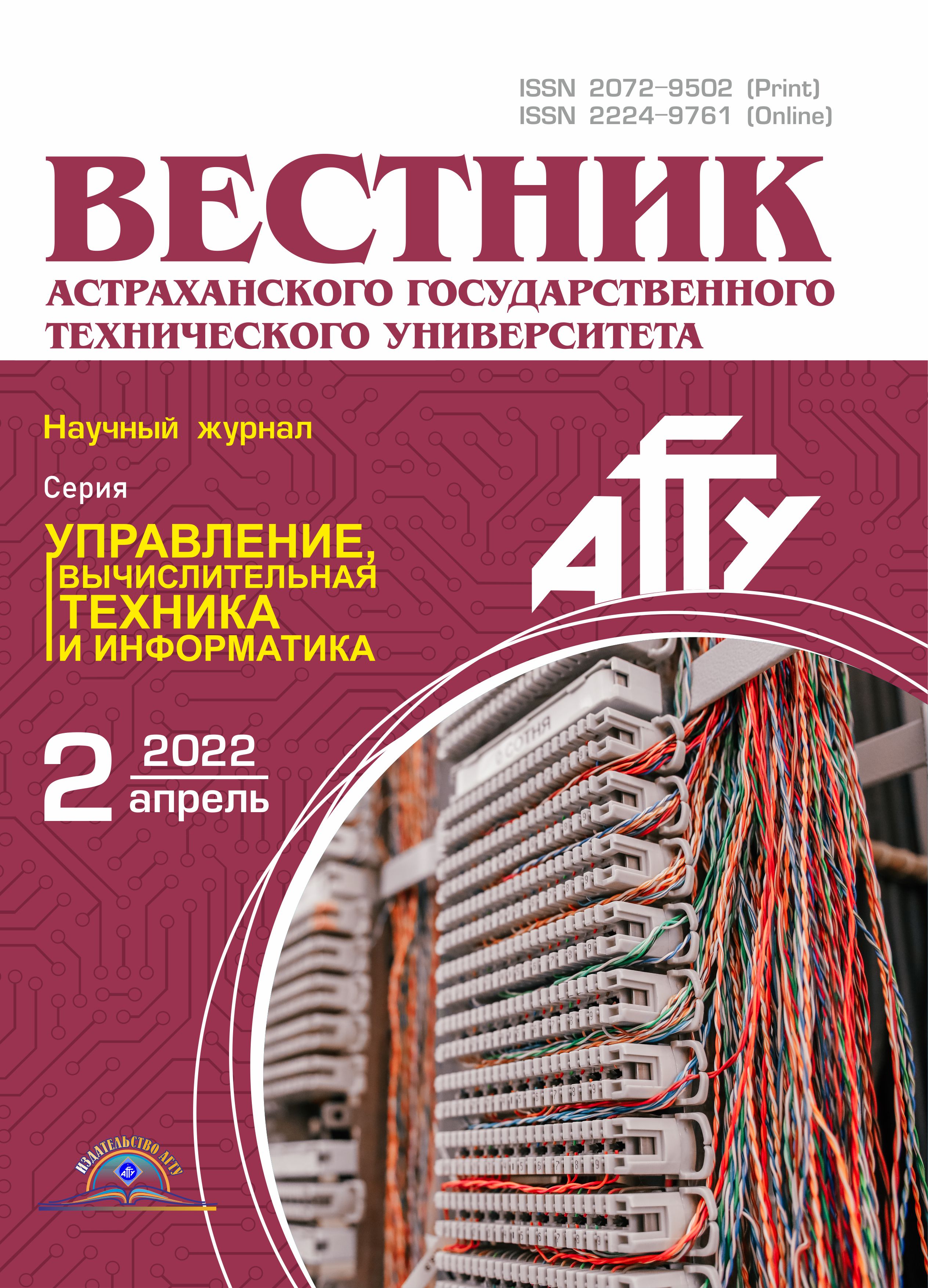Russian Federation
Russian Federation
Bearing manufacturing requires strict adherence to the technological standards and quality control of products at all stages of processing. One of the most accurate and environmentally friendly quality monitoring methods in bearing production is the eddy current method. When using this method, a large array of numerical data is generated that reflects information on the physical and mechanical conditions of the surface. Thus, defect detection process is reduced to defining the task of data segmentation, that is, selection of parts of an array with different dynamics, which is rather difficult for an operator. To solve this problem, a pattern recognition system is proposed, the elements of which are an alphabet of classes (defects of the surface layer), a dictionary of features (fractal dimension of a data array), rules for decision making on recognition (method of standards). Fractal analysis is applied to a two-dimensional array consisting of several data vectors, which will increase the degree of automation of the process of searching and identifying sensor readings indicating a defect, since the defect affects the surface layer of the product not only in the area of its greatest prevalence. Three methods of calculating the fractal dimension of a two-dimensional array are presented. Application of the reference method of the theory of pattern recognition is substantiated, an analytical expression that reflects the method is presented. According to the proposed solutions, it is possible to classify the defect of the rolling surface of the bearing rings by preliminary calculating the fractal dimension for each defect. Implementation of the software developed by using this method can improve the efficiency of quality control in bearing manufacturing and update the technological process.
eddy current signal, recognition, defect, fractal dimension, surface layer, reference method
1. Volosov S. S., Geyler Z. Sh. Upravlenie kachestvom produkcii sredstvami aktivnogo kontrolya. M.: Izd-vo standartov, 1989. 264 s.
2. Ignat'ev A. A., Gorbunov V. V., Ignat'ev S. A. Monitoring tehnologicheskogo processa kak element sistemy upravleniya kachestvom produkcii. Saratov: Izd-vo SGTU, 2009. 160 s.
3. Brzhozovskiy B. M., Ignat'ev A. A., Martynov V. V., Shirtladze A. G. Diagnostika i nadezhnost' avtomatizirovannyh sistem: ucheb. Staryy Oskol: TNT, 2011. 353 s.
4. Bobrov A. L., Vlasov K. V., Beher S. A. Osnovy vihretokovogo nerazrushayuschego kontrolya: ucheb. poso-bie. Novosibirsk: Izd-vo SGUPS, 2019. 98 s.
5. Gorbunov V. V., Karpeev A. M., Ignat'ev A. A. Kontrol' fiziko-mehanicheskih svoystv poverhnostey dorozhek kacheniya podshipnikov dlya gazoturbinnyh aviacionnyh dvigateley vihretokovym metodom // Vestn. Sarat. gos. tehn. un-ta. 2021. № 3 (90). S. 5-11.
6. Chaban L. N. Teoriya i algoritmy raspoznavaniya obrazov: ucheb. posobie. M.: Izd-vo MIIGAiK, 2004. 70 s.
7. Tu D., Gonsales R. Principy raspoznavaniya obrazov. M.: Mir, 1978. 411 s.
8. Fomin Ya. A. Raspoznavanie obrazov: teoriya i primeneniya. M.: FAZIS, 2012. 429 s.
9. Ignat'ev A. A., Shumarova O. S., Ignat'ev S. A. Raspoznavanie defektov poverhnostey kacheniya kolec podshipnikov pri avtomatizirovannom vihretokovom kontrole s primeneniem veyvlet-preobrazovaniy: monogr. Saratov: Izd-vo SGTU, 2017. 108 s.
10. Samoylova E. M., Ignat'ev A. A. Metody i algoritmy intellektualizacii monitoringa tehnologicheskih sistem na osnove avtomatizirovannyh stanochnyh moduley integrirovannogo proizvodstva: monogr. v 3 ch. Saratov: Izd-vo SGTU, 2019. Ch. 3. Gibridnaya intellektual'naya sistema. Informacionnaya integraciya na urovne ASUTP. 84 s.
11. Vahidova K. L., Ignat'ev A. A., Ignat'ev S. A. Opredelenie fraktal'noy razmernosti signalov vihretokovogo datchika dlya raspoznavaniya defektov detaley podshipnikov // Avtomatizaciya i upravlenie v mashino- i priborostroenii: sb. nauch. tr. Saratov: Izd-vo SGTU, 2020. S. 6-8.
12. Ignat'ev M. A., Berezina E. V., Ignat'ev A. A. Analiz teorii fraktalov dlya primeneniya v avtomatizirovannoy sisteme kontrolya kachestva poverhnosti podshipnikov // Avtomatizaciya i upravlenie v mashino- i priborostroenii: sb. nauch. tr. Saratov: Izd-vo SGTU, 2021. S. 56-60.
13. Iudin D. I., Koposov E. V. Fraktaly: ot prostogo k slozhnomu: monogr. N. Novgorod: Izd-vo NGASU, 2012. 200 s.
14. Feder J. Fractals. N.Y.: Plenum press, 1988. 283 p.
15. Kozhanov R. V., Tkachenko I. M., Kozhanova E. R. Pokazatel' Hersta kak mera haotichnosti vremennogo ryada // Vestn. Sarat. gos. tehn. un-ta. 2020. № 2 (85). S. 38-41.
16. Muhametzyanov I. Z., Mayskiy R. A., Yantudin M. N. Metodicheskie osobennosti primeneniya stohasticheskih pokazateley pri analize potokovyh dannyh prirodnyh ili tehnicheskih processov i ob'ektov // Neftegazovoe delo: elektron. nauch. zhurn. 2015. № 5. S. 446-492.
17. Istas J., Lang G. Quadratic variations and estimation of the local Hölder index of a Gaussian process // Ann. Inst. Poincaré. 1994. N. 33. P. 407-436.
18. Bardet J.-M., Lang G., Oppenheim G., Philippe A., Stoev S., Taqqu M. S. Semi-parametric estimation of the long-range dependence parameter: a survey // Theory and applications of long-range dependence Birkhäuser. 2003. P. 557-577.
19. Flandrin P. Wavelet analysis and synthesis of fractional Brownian motion // IEEE Trans. on Inf. Th. 1992. N. 38. P. 910-917.















